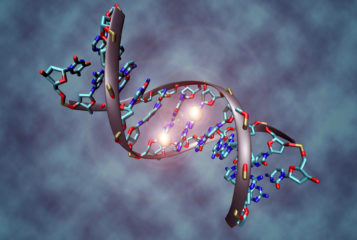Reversible genome-wide epigenome editing may be possible with a new approach using cellular memory to silence gene expression.
US researchers designed a protein complex that selectively and reversibly decreases gene expression by attaching methyl tags to DNA, preventing access by genome decoding machinery – effectively 'switching off' the target gene without altering the DNA sequence.
Previously, it was believed that only genes containing a specific sequence called a CpG site could be methylated, but the new complex – named CRISPRoff – is not limited by this requirement.
'That was a huge shock even for us, because we thought it was only going to be applicable for a subset of genes', said first author Dr James Nuñez from the University of California, San Francisco.
'Since we now can sort of silence any part of the genome that we want, it's a great tool for exploring the function of the genome,' said co-senior author Professor Jonathan Weissman from the Massachusetts Institute of Technology.
Targeting the MAPT gene which encodes the tau protein associated with Alzheimer's disease, the CRISPRoff system significantly downregulated gene expression. After silencing the gene in stem cells, these were chemically transformed into neurons and maintained a 90 percent reduction in gene expression. This demonstrated epigenetic inheritance – a form of cellular memory.
'I think our tool really allows us to begin to study the mechanism of heritability, especially epigenetic heritability, which is a huge question in the biomedical sciences,' said Dr Nuñez.
Adapted from the bacterial CRISPR/Cas9 system, CRISPRoff has advantages over existing epigenetic editing approaches which required constant expression of artificial proteins to regulate gene expression. The team also developed the complementary 'CRISPRon' – a complex which removes the methyl tags, meaning the epigenetic edits are fully reversible.
Professor Weissman highlighted the potential therapeutic use of the approach, but cautioned that applying the approach in vivo would not be straightforward: 'The question is, then, how do you deliver this to an adult? And would it really be enough to impact Alzheimer's? Those are big open questions, especially the latter.'
The paper was published in the journal Cell.
Sources and References
-
An on-off switch for genome editing
-
Genome-wide programmable transcriptional memory by CRISPR-based epigenome editing
-
Scientists develop CRISPR-off for controlling gene expression through heritable epigenetic memory
-
CRISPR breakthrough: Scientists can now turn genes on and off at whim
-
MIT and UCSF researchers create CRISPR 'on-off switch' that controls gene expression without changing DNA
-
A CRISPR on-off switch for genes controls expression without altering DNA





Leave a Reply
You must be logged in to post a comment.